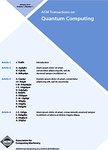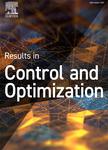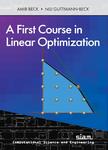版权所有:内蒙古大学图书馆 技术提供:维普资讯• 智图
内蒙古自治区呼和浩特市赛罕区大学西街235号 邮编: 010021
T=题名(书名、题名),A=作者(责任者),K=主题词,P=出版物名称,PU=出版社名称,O=机构(作者单位、学位授予单位、专利申请人),L=中图分类号,C=学科分类号,U=全部字段,Y=年(出版发行年、学位年度、标准发布年)
AND代表“并且”;OR代表“或者”;NOT代表“不包含”;(注意必须大写,运算符两边需空一格)
范例一:(K=图书馆学 OR K=情报学) AND A=范并思 AND Y=1982-2016
范例二:P=计算机应用与软件 AND (U=C++ OR U=Basic) NOT K=Visual AND Y=2011-2016



Get 10% off by pre-ordering this book.
This item has not yet published. Pre-order now and we will ship and process payment when the book becomes available.
To pre-order contact Customer Service:
800-447-SIAM (US & Canada)
215-382-9800 (outside US & Canada)
Do not send credit card details via email.
Prices: List $66.60 / Member $46.62
Publishing May 2025
This self-contained textbook provides the foundations of linear optimization, covering topics in both continuous and discrete linear optimization. It gradually builds the connection between theory, algorithms, and applications so that readers gain a theoretical and algorithmic foundation, familiarity with a variety of applications, and the ability to apply the theory and algorithms to actual problems.
To deepen the reader's understanding, the authors provide
many applications from diverse areas of applied sciences, such as resource allocation, line fitting, graph coloring, the traveling salesman problem, game theory, and network flows;
more than 180 exercises, most of them with partial answers and about 70 with complete solutions; and
a continuous illustration of the theory through examples and exercises.
A First Course in linear optimization is intended to be read cover to cover and requires only a first course in linear algebra as a prerequisite. Its 13 chapters can be used as lecture notes for a first course in linear optimization.







电话和邮箱必须正确填写,我们会与您联系确认。
版权所有:内蒙古大学图书馆 技术提供:维普资讯• 智图
内蒙古自治区呼和浩特市赛罕区大学西街235号 邮编: 010021

暂无评论